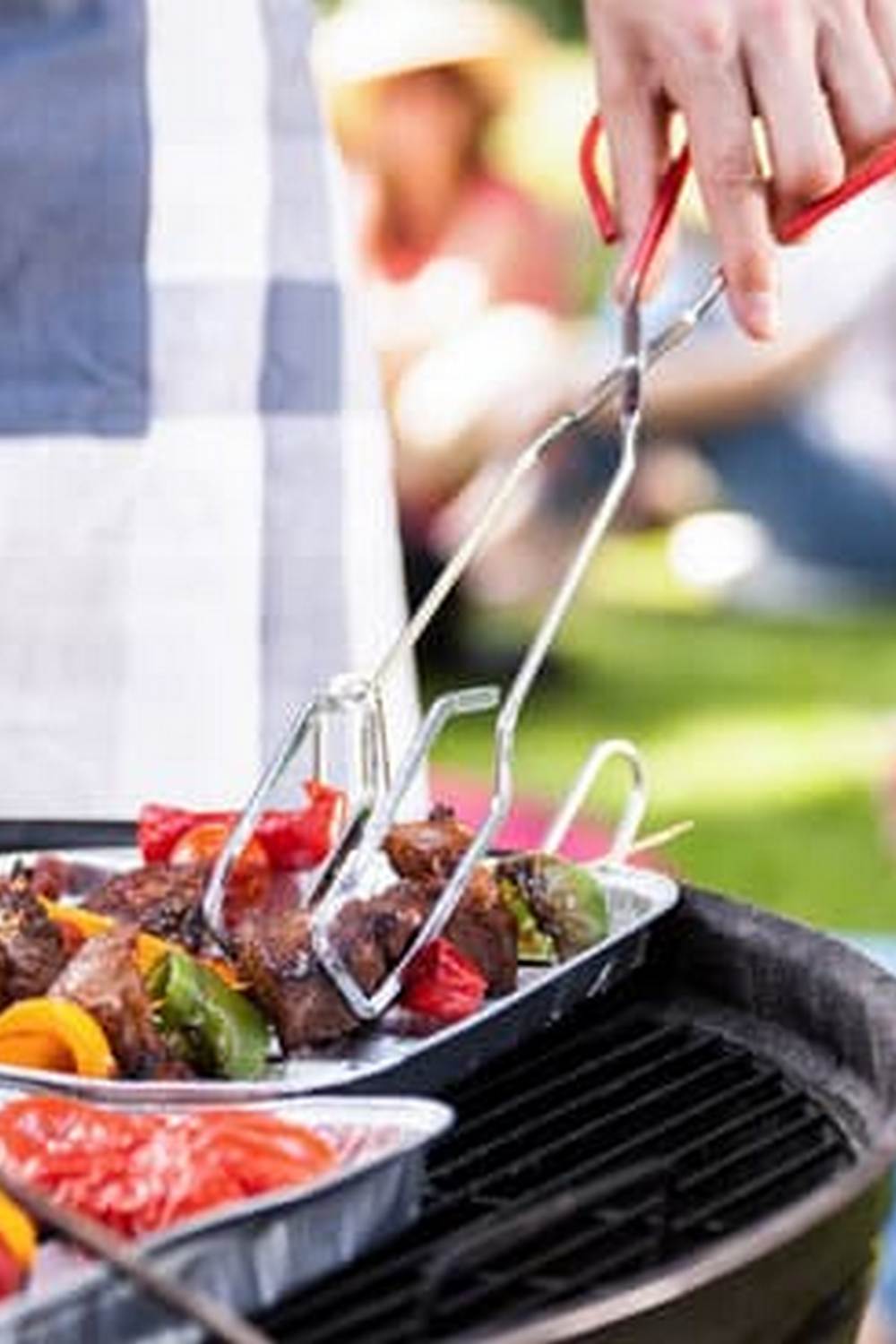Washington DC, the bustling capital city of the United States, may not be the first place that comes to mind when you think of gardening. However, tucked away amidst the iconic monuments and government buildings lies a thriving world of vegetable gardening. Whether you’re a seasoned gardener or just starting to develop your green thumb, exploring vegetable gardening in Washington DC offers a unique and rewarding experience.
Vegetable gardening has gained immense popularity in Washington DC for several reasons. Firstly, it provides residents with an opportunity to reconnect with nature and escape the fast-paced city life. Gardening serves as a therapeutic and stress-relieving activity that allows individuals to unwind and immerse themselves in nature’s beauty. Additionally, growing your own vegetables ensures access to fresh and organic produce while minimizing reliance on processed foods.
In addition to its numerous benefits, vegetable gardening in Washington DC is uniquely challenging due to its specific climate. The region experiences hot and humid summers along with cold winters, which can make plant selection crucial for success.
By choosing the right vegetables that thrive in this unique environment, gardeners can ensure bountiful harvests throughout the year. So whether you have limited space or ample room for a garden, embrace the world of vegetable gardening in Washington DC and reap the rewards of nurturing your own food source.
Best Vegetables to Grow in Washington DC’s Unique Climate
Washington DC has a unique climate that poses both advantages and challenges for vegetable gardening enthusiasts. With its humid subtropical climate, characterized by hot summers and cold winters, it is crucial to select the right vegetables that can thrive in these conditions. Here is a comprehensive list of vegetables that are well-suited for Washington DC’s unique climate:
- Tomatoes: Tomatoes are one of the most popular vegetables to grow in Washington DC due to their versatility and adaptability. Varieties such as ‘Celebrity,’ ‘Early Girl,’ and ‘Cherokee Purple’ perform exceptionally well in the area’s warm and humid summers.
- Peppers: Peppers, both sweet and hot varieties, also thrive in the District’s climate. Bell peppers like ‘California Wonder’ and chili peppers like ‘Jalapeno’ are great options for adding spice and flavor to your dishes.
- Leafy Greens: Cool-season leafy greens are another excellent choice for Washington DC gardeners. Plants like kale, lettuce, spinach, and Swiss chard can be grown successfully during the spring and fall seasons when temperatures are milder.
- Root Vegetables: Carrots, radishes, and beets are ideal vegetables for Washington DC’s well-drained soil during the cooler months. They provide a hearty harvest with minimal maintenance.
- Herbs: Herbs like basil, thyme, rosemary, parsley, and cilantro thrive in the District’s warm summers. These culinary essentials add freshness to your dishes while simultaneously enhancing your garden’s aesthetic appeal.
- Green Beans: Green beans are highly productive plants that can handle the heat of Washington DC summers while producing an abundant harvest. Bush bean varieties like ‘Kentucky Wonder’ or pole bean varieties such as ‘Blue Lake’ can be grown easily with good results.
It is vital to choose vegetables that not only tolerate but also enjoy the specific climatic conditions of this region for a successful garden. By selecting the right vegetables, gardeners in Washington DC can enjoy a bountiful harvest and maximize their gardening experience.
Essential Tools and Supplies for Vegetable Gardening in Washington DC
Vegetable gardening in Washington DC requires certain essential tools and supplies to ensure a successful and productive garden. Having the right tools and supplies can make all the difference in maintaining healthy plants, maximizing yield, and enjoying the process of gardening. Here is a list of some essential tools and supplies that every vegetable gardener in Washington DC should have:
- Garden Gloves: Protect your hands from dirt, cuts, and scratches with a good pair of garden gloves. Look for gloves that are durable, comfortable, and made from breathable materials.
- Hand Trowel: A hand trowel is a versatile tool that is perfect for digging holes for planting seedlings or transplanting vegetables. Choose a sturdy hand trowel with a comfortable grip.
- Pruning Shears: Pruning shears are essential for trimming dead leaves, pruning overgrown branches, or harvesting mature vegetables. Invest in a high-quality pair of pruning shears that are sharp and easy to use.
- Watering Can or Hose: Adequate watering is crucial for vegetable growth, especially during hot summers in Washington DC. Choose between a watering can or hose depending on the size of your garden and personal preference.
- Garden Fork or Rake: A garden fork or rake is useful for loosening compacted soil, removing weeds, and spreading mulch or compost. Look for one with sturdy tines or teeth to effectively work the soil.
- Mulch: Mulch plays an important role in conserving moisture, preventing weeds, regulating soil temperature, and adding organic matter to the soil. Consider using organic mulch like straw, wood chips, or compost to improve soil health.
- Fertilizer: To provide essential nutrients to your vegetable plants, consider using organic fertilizers such as compost or fish emulsion. Find out the nutrient requirements specific to each vegetable you are growing.
- Plant Markers: Labeling your vegetable plants is essential for keeping track of different varieties and ensuring proper care. Use plant markers or labels to avoid confusion.
- Seed Starting Supplies: If you are starting your vegetables from seed, invest in seed trays, potting soil mix, and a small indoor grow light setup. This will help you get a head start on the growing season.
- Garden Tool Storage: Keep your tools organized and easily accessible by investing in a garden tool storage solution. This can be a garden shed, a designated storage area, or even just hooks on the wall of your garage.
By having these essential tools and supplies, you’ll be well-equipped to handle the various tasks involved in vegetable gardening in Washington DC. It is also important to consider supporting local gardening stores or online sources that offer high-quality tools and supplies specifically suited for the region’s climate and soil characteristics.
| Essential Tools | Essential Supplies |
|---|---|
| Garden Gloves | Mulch |
| Hand Trowel | Fertilizer |
| Pruning Shears | Plant Markers |
| Watering Can or Hose | Seed Starting Supplies |
| Garden Fork or Rake | Garden Tool Storage |
Preparing the Soil for Vegetable Gardening in Washington DC
When it comes to vegetable gardening in Washington DC, one of the most crucial steps is preparing the soil. Proper soil preparation sets the foundation for healthy plant growth and abundant harvests. In this section, we will explore the significance of soil preparation and provide step-by-step instructions on how to prepare the soil effectively for vegetable gardening.
The unique soil characteristics in Washington DC can pose certain challenges for aspiring vegetable gardeners. The region’s soil is predominantly clay, which tends to be heavy and drains poorly. However, with proper amendments and techniques, this clay soil can be transformed into a rich and fertile medium that promotes optimal plant growth.
To start preparing your soil, begin by removing any debris or vegetation from the garden area. Clearing away weeds, rocks, and other obstacles will create a clean slate for your vegetables to thrive. Once cleared, you can then proceed with tilling or loosening the soil to break up compacted sections.
After tilling, it is essential to address the issue of drainage in clay soils. Amending the soil with organic matter such as compost or aged manure helps improve its structure by adding nutrients and enhancing drainage capabilities. Incorporate a generous amount (about 3-4 inches) of organic matter into the top 6-8 inches of soil using a garden fork or tiller.
Another vital aspect of soil preparation is adjusting its pH level. Most vegetables prefer slightly acidic to neutral soils (pH range of 6.0-7.0). Conduct a pH test using a home testing kit or send a sample to a local extension service for analysis. Based on the results, you may need to add sulfur or lime to raise or lower the pH accordingly.
Lastly, consider adding a layer of mulch over your prepared soil. Mulch helps conserve moisture, suppress weeds, regulate temperature fluctuations, and improve overall soil health. Organic mulch options include straw, wood chips, or shredded leaves. Apply a 2-3 inch layer of mulch around the base of your vegetable plants, making sure to keep it a few inches away from the plant stems.
By following these soil preparation guidelines, you can create an optimal growing environment for your vegetables in Washington DC. Taking the time to prepare the soil properly will ensure that your plants have access to essential nutrients and moisture, leading to healthier and more productive vegetable gardens.
| Soil Preparation Steps |
|---|
| 1. Clear the garden area of debris and vegetation |
| 2. Till or loosen the soil to break up compacted sections |
| 3. Incorporate organic matter (compost or aged manure) |
| 4. Adjust pH level based on soil test results |
| 5. Apply a layer of organic mulch around plants |
Creating a Year-Round Vegetable Gardening Schedule in Washington DC
Washington DC enjoys a unique climate that allows for year-round vegetable gardening. With distinct seasons and varying temperatures, it is important for gardeners in the area to have a well-planned schedule to ensure successful harvests throughout the year. By understanding the specific vegetables that thrive during each season, Washington DC residents can maximize their gardening efforts and enjoy fresh produce all year long.
Gardening Seasons in Washington DC
In Washington DC, the gardening seasons are divided into spring, summer, fall, and winter. Each season presents different opportunities and challenges for vegetable gardening.
During the spring months of March to May, cool-weather crops flourish in Washington DC’s mild temperatures. This is the perfect time to plant vegetables such as lettuce, spinach, radishes, peas, and broccoli. As the weather warms up in June through August, it is time to transition to warm-weather crops like tomatoes, peppers, cucumbers, beans, and corn.
Fall brings cooler temperatures from September to November but still offers an excellent opportunity for continued vegetable production. Vegetables such as carrots, beets, kale, Swiss chard, and Brussels sprouts thrive during this time. Finally, the winter months of December to February require cold-hardy vegetables that can withstand frost and snow. Root crops like carrots and parsnips as well as leafy greens like kale and spinach are ideal for winter gardening.
Year-Round Gardening Schedule
To help Washington DC gardeners plan their activities throughout the year, here is a detailed guide on what vegetables to plant each season:
Spring (March-May):
1. Lettuce 2. Spinach 3. Radishes 4. Peas 5. Broccoli Summer (June-August):
1. Tomatoes 2. Peppers 3. Cucumbers 4. Beans 5. Corn Fall (September-November):
1. Carrots 2. Beets 3. Kale 4. Swiss Chard 5. Brussels Sprouts Winter (December-February):
1. Carrots 2. Parsnips 3. Kale 4. Spinach By following this year-round gardening schedule, Washington DC residents can ensure a continuous supply of fresh vegetables straight from their gardens, no matter the season.
Overall, while vegetable gardening in Washington DC can present unique challenges due to its climate, with proper planning and a well-executed year-round gardening schedule, individuals can enjoy the joys and benefits of growing their own food all year long. From spring’s crisp lettuces to winter’s robust root vegetables, each season offers an opportunity for bountiful harvests and a deeper connection to nature in urban environments like Washington DC.
Managing Pests and Diseases in Washington DC Vegetable Gardens
Common Pests and Diseases in Washington DC Vegetable Gardens
Like any other region, Washington DC is not immune to pests and diseases that can wreak havoc on vegetable gardens. Some of the most common pests you may encounter include aphids, cabbage loopers, tomato hornworms, and squash bugs. These pests can cause significant damage to your plants if left unchecked. In terms of diseases, common issues in the region include powdery mildew, blight, and various types of rot.
Organic Pest and Disease Control Solutions
When it comes to managing pests and diseases in your Washington DC vegetable garden, many gardeners prefer organic and sustainable solutions. Chemical pesticides can harm beneficial insects and contaminate the environment, so it’s important to explore alternative methods.
One effective approach is companion planting, which involves growing certain plants together to naturally repel pests or attract beneficial insects. For example, planting marigolds around your tomatoes can help deter nematodes and aphids.
Another organic method is using natural pest control products like neem oil or insecticidal soap. These products are derived from plants and work by suffocating or disrupting the feeding patterns of pests.
Additionally, practicing good garden hygiene by removing diseased plant material promptly can help prevent the spread of diseases. Rotate your crops each year to reduce the risk of disease build-up in the soil.
Preventing and Diagnosing Common Issues
Prevention is key when it comes to managing pests and diseases in your Washington DC vegetable garden. Regularly inspect your plants for signs of trouble such as yellowing leaves, wilting, or unusual growth patterns. Identifying problems early allows you to take action before they become more severe.
It’s also essential to provide optimal growing conditions for your vegetables. Proper spacing between plants helps improve air circulation and reduces humidity levels that contribute to disease development. Mulching can help suppress weeds and maintain even soil moisture, preventing stress on the plants.
If you’re uncertain about a particular issue in your garden, don’t hesitate to seek guidance from a local extension office or gardening association. They can provide specific advice tailored to the region and help you diagnose any problems you may be experiencing.
By taking a proactive approach and utilizing organic pest and disease control methods, you can ensure the health and productivity of your Washington DC vegetable garden. With diligence and knowledge, you’ll be able to overcome challenges and enjoy a bountiful harvest.
Maximizing Limited Space for Vegetable Gardening in Urban Washington DC
In a bustling urban environment like Washington DC, space is often a limited commodity. However, this should not discourage aspiring vegetable gardeners from pursuing their green thumb dreams. With some creativity and strategic planning, it is possible to maximize limited space for vegetable gardening in the city.
Vertical Gardening
One effective technique for maximizing space in an urban setting is through vertical gardening. This involves growing plants upwards rather than outwards, utilizing walls, trellises, or fences as support structures. Vertical gardening not only saves floor space but also provides an aesthetically pleasing way to display plants in a vertical arrangement.
In Washington DC, popular vegetables that can thrive in vertical gardens include tomatoes, cucumbers, beans, and herbs. Using high-quality trellises or stakes is crucial for proper support and stability.
Container Gardening
Another approach to vegetable gardening in limited spaces is container gardening. This method allows you to grow vegetables in pots, containers, or even repurposed vessels such as buckets or old tires. Container gardening offers flexibility in terms of location since pots can be placed on patios, balconies, windowsills, or rooftops.
When selecting containers for your vegetables, ensure they have proper drainage holes and are large enough to accommodate the root systems of the chosen plants. Popular vegetables for container gardening include lettuce, peppers, radishes, and herbs.
Utilizing Community Gardens
For those without access to a private outdoor space for gardening in Washington DC’s urban landscape, community gardens offer an ideal solution. These shared spaces allow individuals to cultivate their own plots alongside fellow garden enthusiasts within their local community.
Many neighborhoods throughout the city have established community gardens where residents can rent or reserve plots for a modest fee. Community gardens provide not only adequate growing space but also a sense of camaraderie and shared knowledge among like-minded individuals.
By implementing these strategies, even urban dwellers with limited space can enjoy the satisfaction of growing their own fresh vegetables in Washington DC. Whether through vertical gardening, container gardening, or utilizing community gardens, there are plenty of opportunities to cultivate a thriving vegetable garden in the city. With careful planning and a little creativity, it is possible to bring the joys and benefits of vegetable gardening to even the smallest corners of Washington DC.
Washington DC Resources and Community for Vegetable Gardeners
Washington DC is not only a vibrant and bustling city, but it is also home to a thriving community of vegetable gardeners. With its rich history and culture, Washington DC offers a plethora of resources and support for those interested in embarking on their own vegetable gardening journey.
Whether you are a seasoned gardener or just starting out, there are plenty of opportunities to connect with like-minded individuals and access the necessary tools and knowledge to cultivate a successful vegetable garden.
One valuable resource for vegetable gardeners in Washington DC is the abundance of community gardens scattered throughout the city. These communal spaces offer individuals the chance to rent their own plot of land, where they can grow their favorite vegetables while connecting with other gardeners in their neighborhood. Community gardens not only provide access to fertile soil but also foster a sense of camaraderie and shared knowledge among members.
In addition to community gardens, Washington DC boasts numerous farmer’s markets that showcase locally grown produce. These markets are not only great places to procure fresh vegetables, but they can also serve as fantastic sources of inspiration and education.
Chatting with local farmers can provide valuable insights into what thrives in the area’s unique climate and growing conditions. Additionally, many farmer’s markets may offer workshops or demonstrations on topics such as composting, organic pest control, and sustainable gardening practices.
For those seeking more formal guidance and support, local gardening associations or clubs can provide a wealth of resources. These organizations often host educational events, workshops, and meetings where individuals can learn from experienced horticulturists and fellow enthusiasts. Whether you have specific questions about pest management or are looking for recommendations on which varieties perform best in Washington DC’s climate, these groups can be invaluable assets.
Overall, Washington DC presents an exciting landscape for vegetable gardeners looking to explore its vast resources and connect with fellow enthusiasts. From community gardens to farmer’s markets and gardening associations, there are countless opportunities for learning, networking, and fostering a sense of community. By taking advantage of these available resources, aspiring gardeners can embark on a rewarding journey filled with fresh produce, sustainable practices, and the joy of connecting with nature in the heart of the city.
Conclusion
In conclusion, vegetable gardening in Washington DC offers a multitude of joys and benefits for residents of all backgrounds. Throughout this article, we have explored the unique climate of the region and identified the best vegetables to grow in Washington DC. We have also discussed essential tools and supplies, soil preparation, year-round gardening schedules, pest management techniques, and strategies for maximizing limited space.
Now that you have an understanding of what it takes to start your own vegetable garden in Washington DC, it’s time to embrace the numerous benefits that come with it. By growing your own produce, not only do you have access to fresh and nutritious food right at your doorstep but you are also contributing to sustainability efforts by reducing your carbon footprint.
Additionally, vegetable gardening can provide a sense of mental wellness and fulfillment as it allows you to connect with nature in an urban environment like Washington DC. Moreover, participating in community gardens or joining local gardening associations fosters bonds among fellow gardeners who share their expertise and guidance.
So don’t wait any longer. Start your own vegetable garden today and experience the joy of nurturing plants from seedlings to bountiful harvests. Whether you have limited space or ample room, there are always ways to adapt and make the most out of your gardening endeavors. Rediscover the beauty of cultivating nature in a concrete jungle; embrace the joys and benefits of vegetable gardening in Washington DC.
Frequently Asked Questions
What crops grow in Washington DC?
The crops that grow in Washington, DC include a variety of vegetables, fruits, and herbs. Some common crops grown in the region are tomatoes, peppers, cucumbers, squash, lettuce, spinach, kale, peas, beans, corn, strawberries, raspberries, blueberries, and herbs such as basil and parsley. The climate in DC is suitable for growing these crops with its warm summers and moderate winters.
When should I plant tomatoes in Washington DC?
Tomatoes should be planted in Washington DC after the threat of frost has passed and the soil temperature has warmed up. Generally, it is safe to plant tomato seedlings or transplants outdoors around mid-May to early June in this region.
Since tomatoes prefer warm weather and need plenty of sunlight to thrive, it is important to wait until the danger of frost has gone and the soil has had enough time to warm up before planting them.
What is the best month to start a vegetable garden?
The best month to start a vegetable garden largely depends on the specific growing conditions in your area. However, in general terms, many gardeners find that starting a vegetable garden in spring brings favorable results. Typically, late spring (late April to early June) is often considered an ideal time for starting a vegetable garden as the weather starts warming up across most regions.
This timing allows seeds or young transplants to establish themselves before hot summer temperatures arrive. However, it is worth researching your specific location’s climate and consulting with local gardening resources or experts for more accurate information on when to start your vegetable garden considering regional variables like frost dates and growing season length.

If you’re looking to get into vegetable gardening, or are just looking for some tips on how to make your current garden better, then you’ve come to the right place! My name is Ethel and I have been gardening for years. In this blog, I’m going to share with you some of my best tips on how to create a successful vegetable garden.





